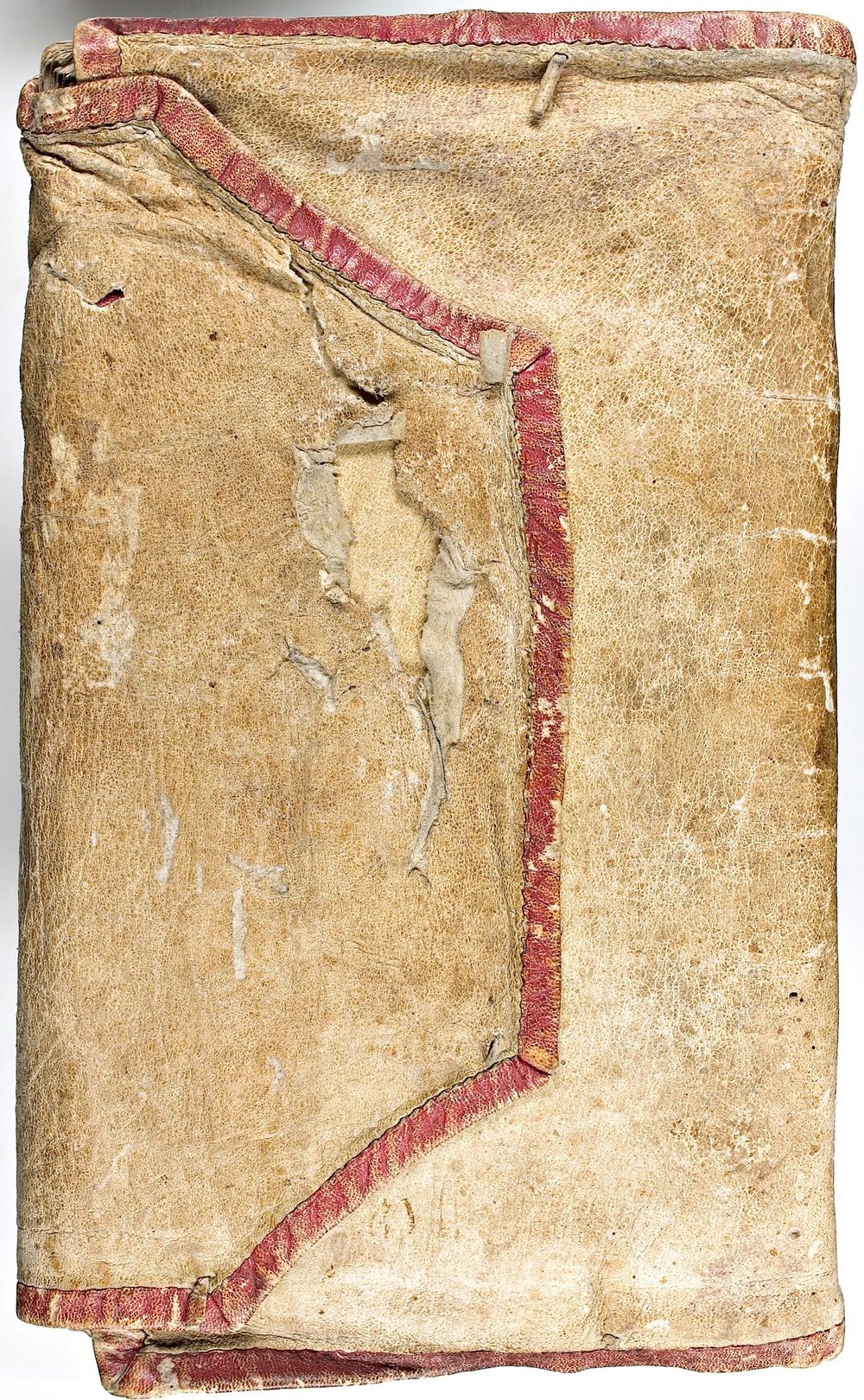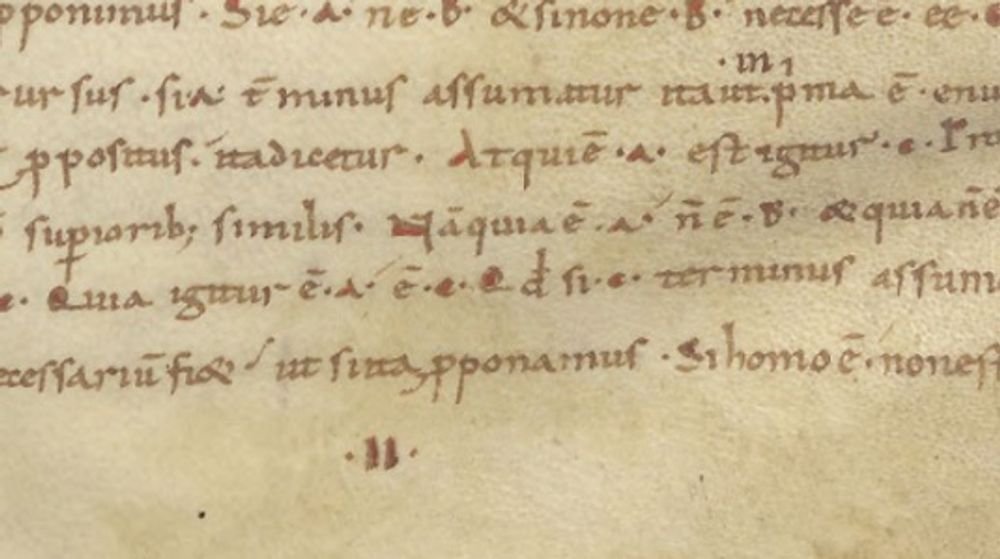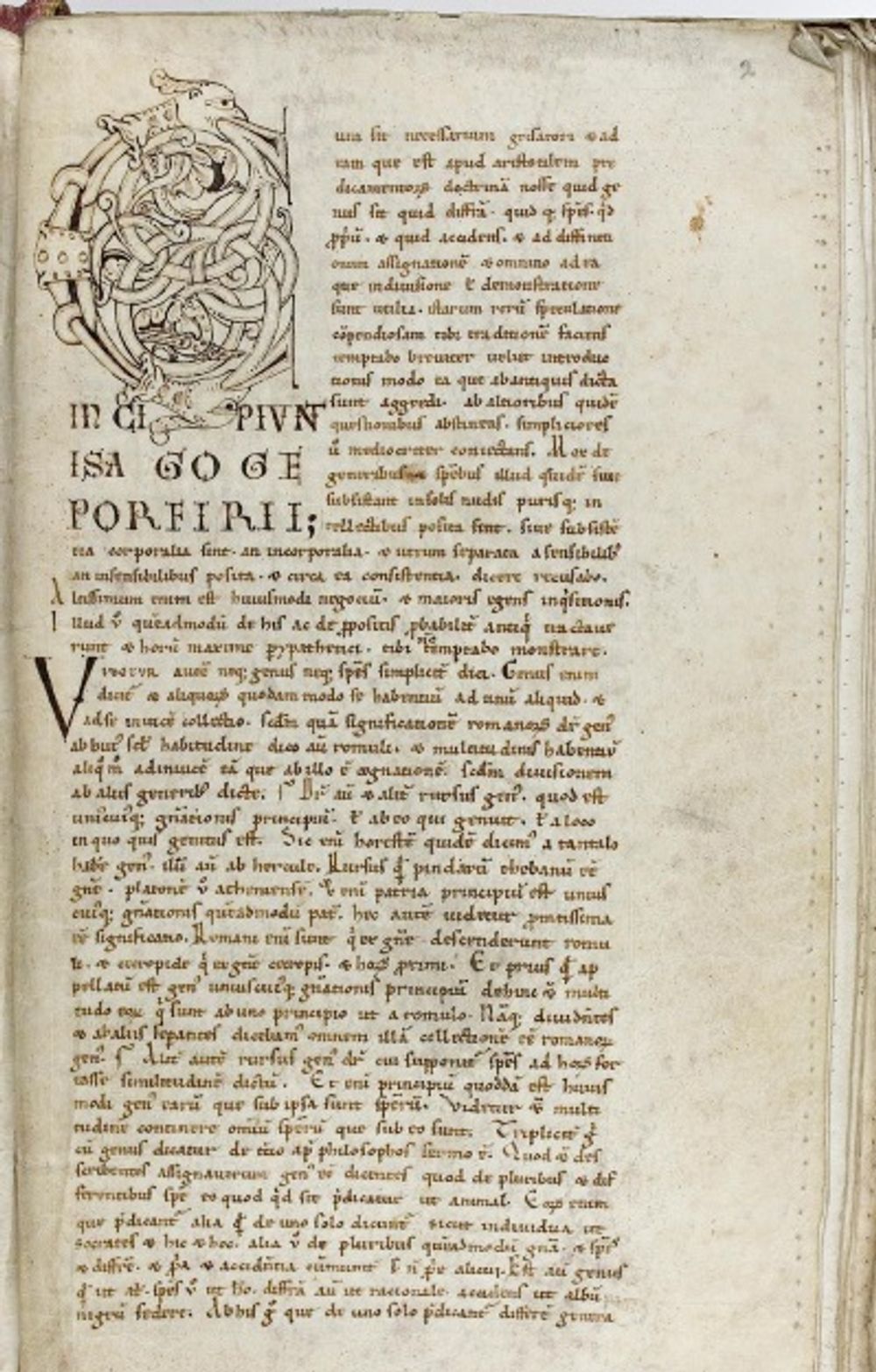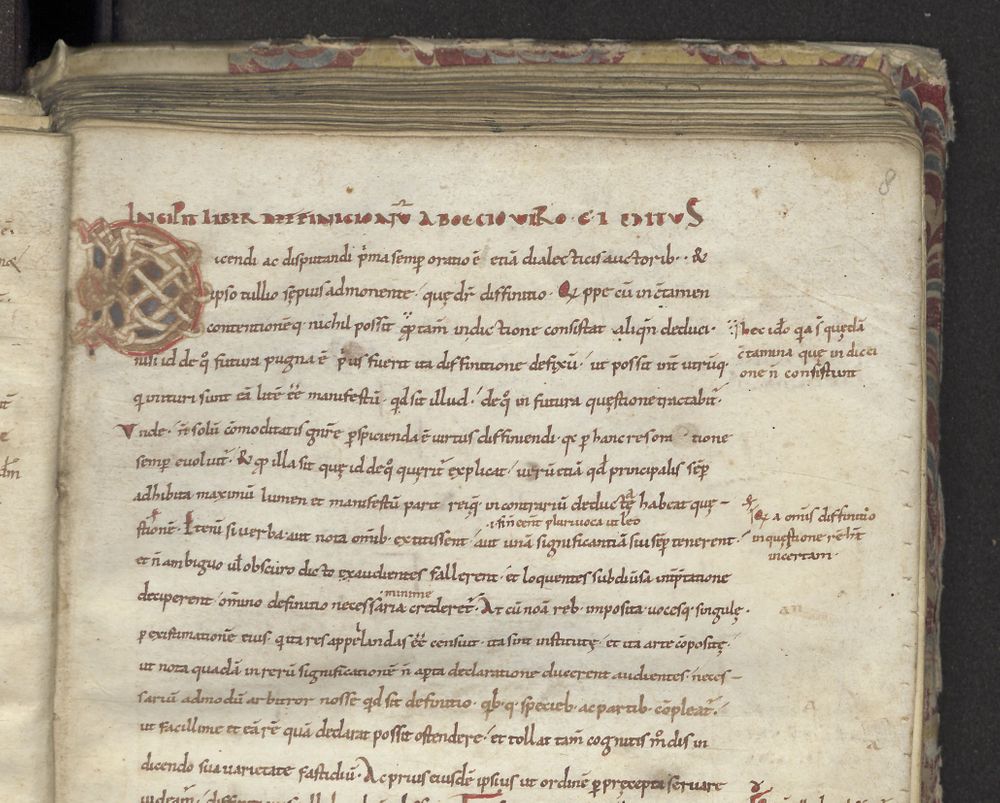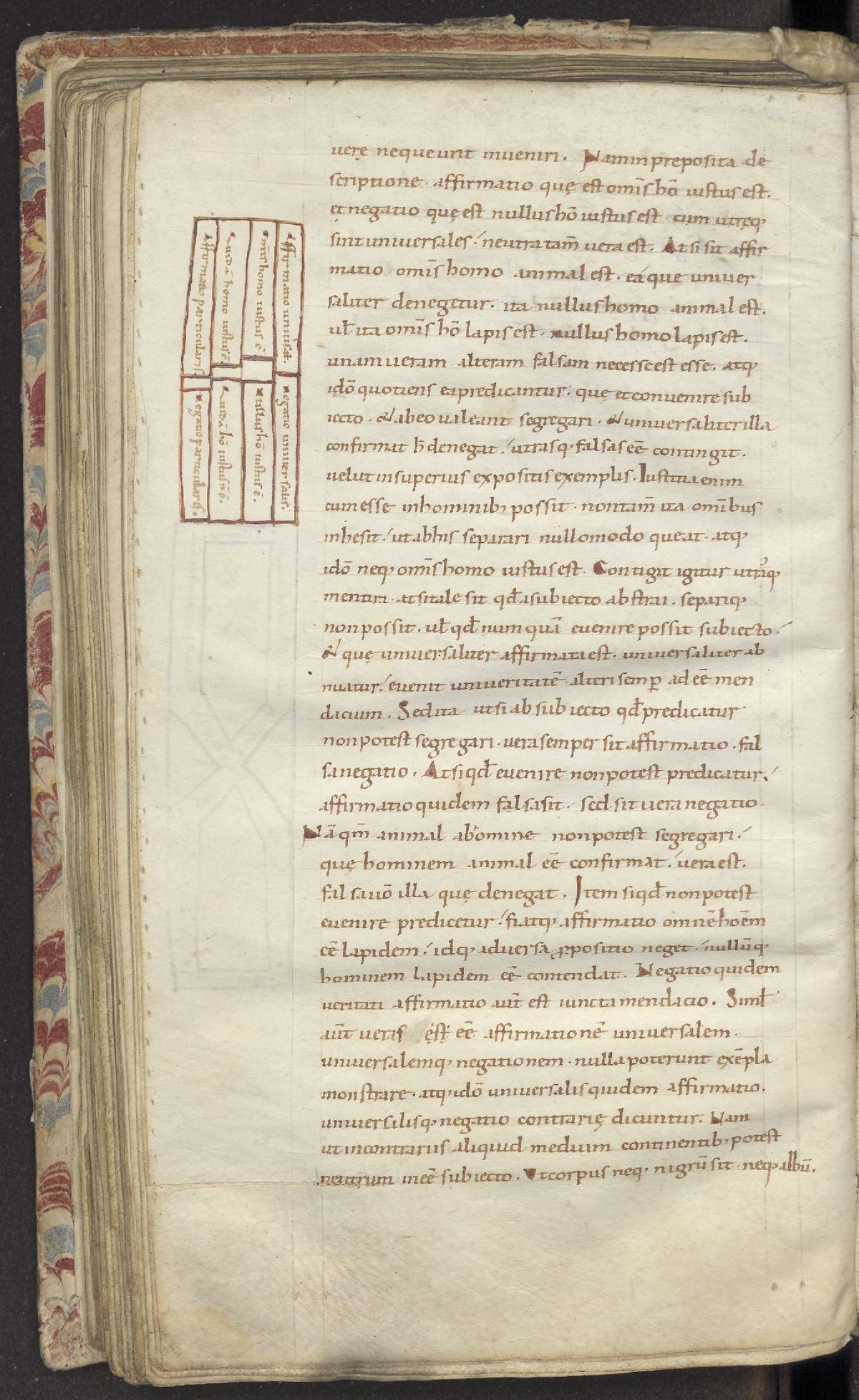Leiden, UB, BPL 84
A dialectical handbook1
Leiden, UB, BPL 84 is a collection of works on dialectic, probably made in Italy, and dating to the eleventh century. The manuscript originally belonged to the collection of Fransiscus Nansius, a sixteenth-century Flemish philologist. Leiden, UB, BPL 88 was another manuscript from this classically-inclined collector’s library.
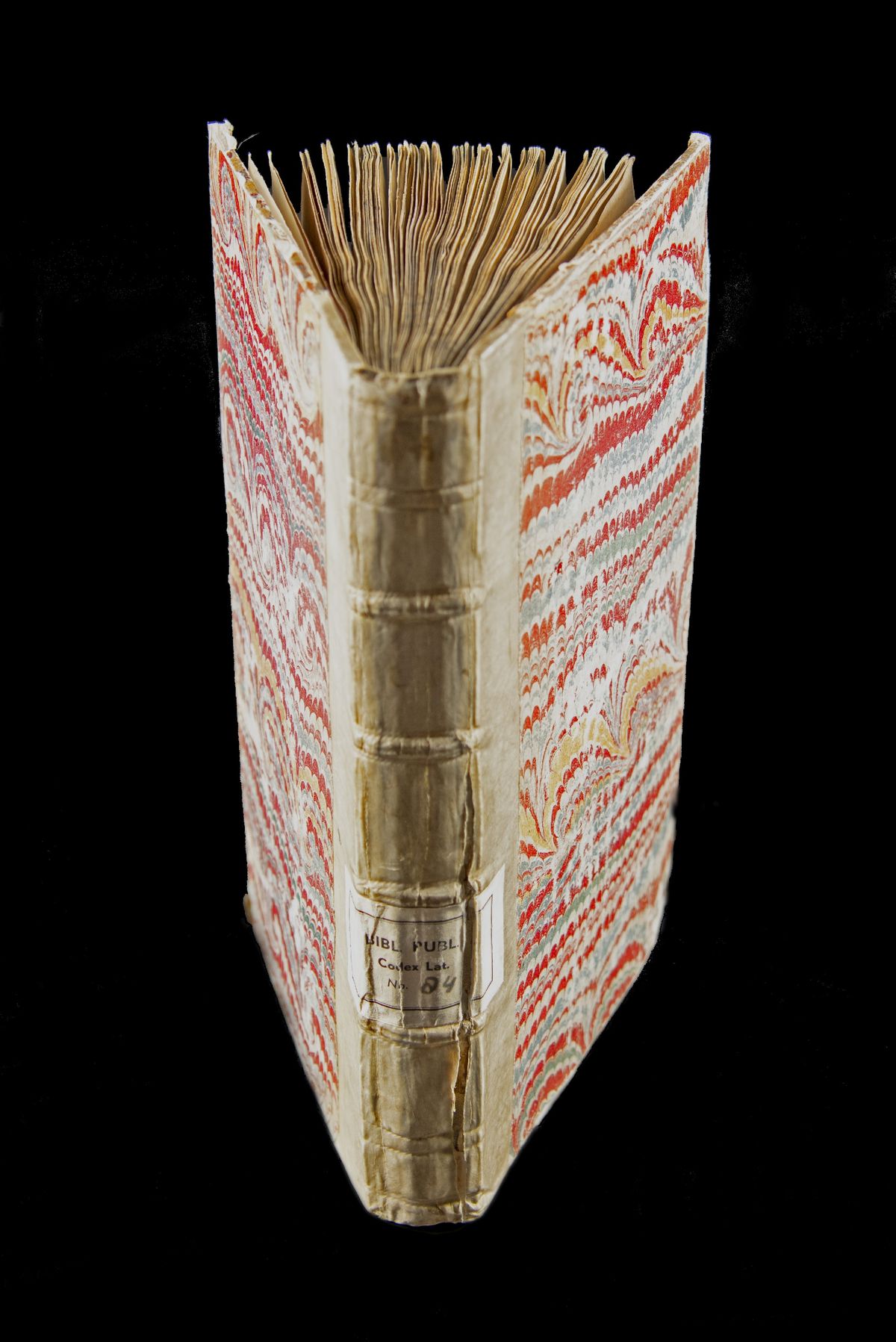

The shape of the volume is striking. Measuring 210 mm in height and 100 mm in width, it’s particularly narrow in form. Schoolbooks often took this narrow format in the Middle Ages. The binding of BPL 84 is not original, but we can imagine that the contents of the manuscript may have at one stage been covered by a limp leather binding, perhaps like that found on Darmstadt, ULB, HS 2882 (see second image), another manuscript of logical works that is also disproportionally narrow in shape.


What’s inside?
The majority of the works in the volume are by Boethius (De divisione; De definitione [here attributed to Boethius, but by Marius Victorinus]; De hypotheticis syllogismis, De syllogismo categorico; Introductio ad syllogismos categoricos), but the volume concludes with Alcuin’s De dialectica, a short text written in dialogue form on the study of logic.


What did this book look like in the Middle Ages?
A medieval reader has added a content list at the end of the volume, starting with “libri boetii”, books of Boethius, and listing the titles. These match the existing contents of BPL 84, so we know that this collection of texts has been together since at least the time it was in this reader’s hands. Although the content list suggests that these texts have travelled together for a long time, there are clues in the manuscript which suggest that these texts may not have always been combined in this way.

http://hdl.handle.net/1887.1/item:2348775
Medieval books are made of collections of parchment leaves, called quires. These quires were often numbered or lettered so they could be assembled in order. By looking at these numbers and letters we can reconstruct the original form of the manuscript. On f. 8v we find the quire signature ‘c’, suggesting that this gathering (now the first) was once the third in a collection of quires. Furthermore, a new set of quire gatherings starts on f. 17r; from this point to the end of the manuscript quires are numbered with numbers, not letters. At the bottom of f. 32v, for example, we find the number ‘ii’. The second part of the manuscript (from f. 17r) was originally independent.
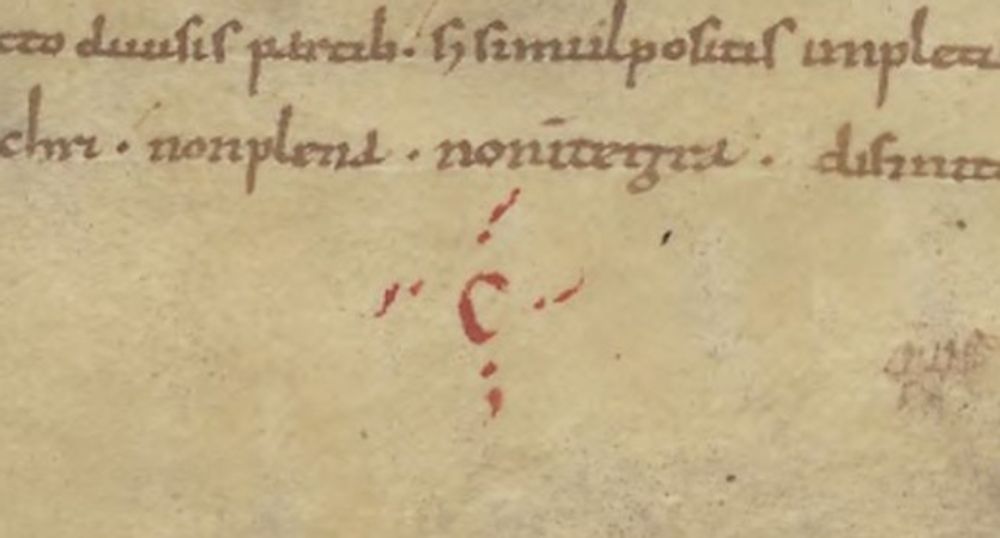

http://hdl.handle.net/1887.1/item:2348775
Looking at the lettering, we can conclude that the first two gatherings (ff. 1-8; 9-16, ‘c’ and ‘d’) were originally separate from the rest of the manuscript and two quires (originally labelled, we can assume, ‘a’ and ‘b’) are now missing from the beginning of this section. Comparison with other manuscripts containing similar works might give us some leads about what else these missing quires contained. For example, as the second image shows, Darmstadt, UBL, HS 2882, another logica vetus manuscript, opens with Boethius’s translation of Porphyry’s Isagoge. BPL 84 may have also opened with this text, or with another text from the logica vetus corpus.
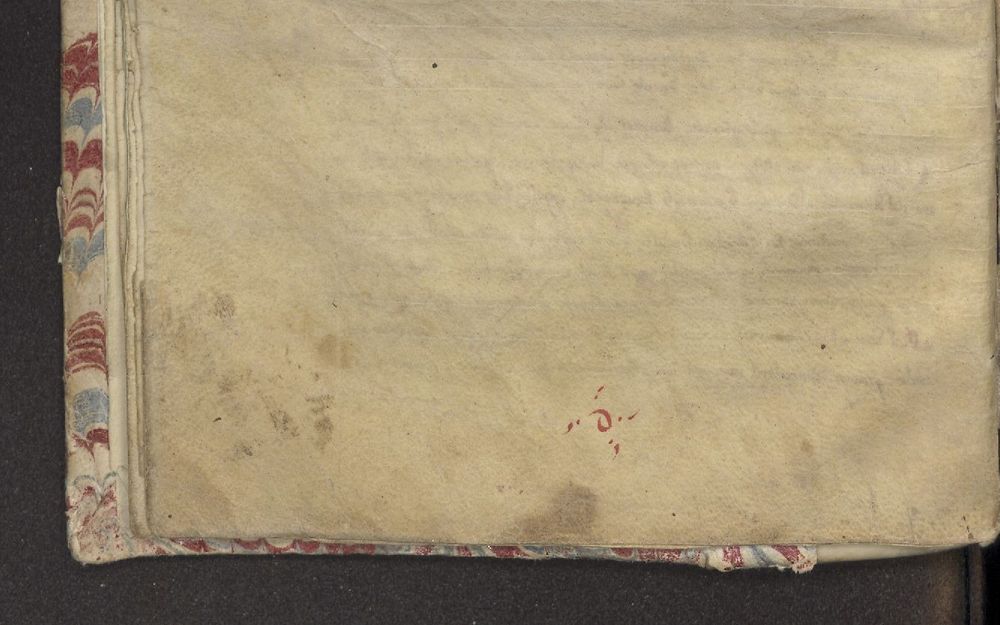

http://hdl.handle.net/1887.1/item:2348775
The gloss as a clue to the missing quires?
We can also look at cross-references within annotations to the manuscript to establish what the missing quires may have contained. Notably, on two instances the gloss refers to Cicero’s Topica, another important logical work. These references to Book III of Cicero’s Topica suggest that, at the very least, the glossator was familiar with this text. It could even have been one of the items included in the missing quires.
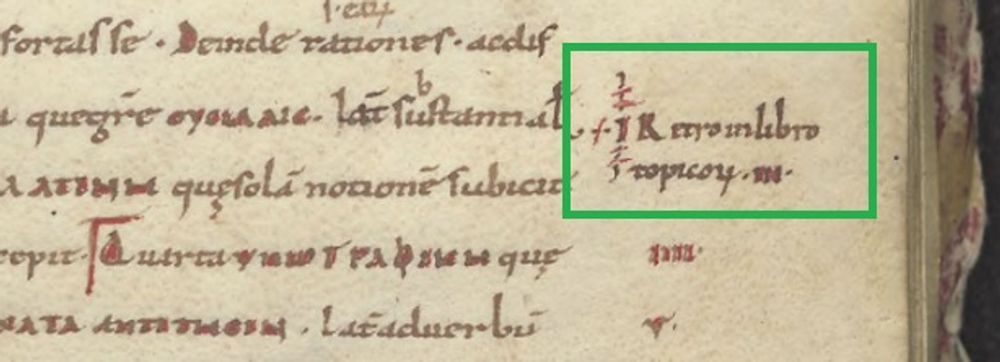

http://hdl.handle.net/1887.1/item:2348775
Teamwork
Although the first and second parts of the manuscript originally circulated separately, their format and the fact that the same scribes are active in both parts of the manuscript suggest that they were made in the same context, probably for the same group of users. These scribes worked in collaboration; here a third of the way down f. 67v (in the middle of a quire) a new scribe (writing in a more rounded hand) takes over to continue copying Boethius’s Introductio ad syllogismos categoricos (here called the ‘Ante predicamenta’).
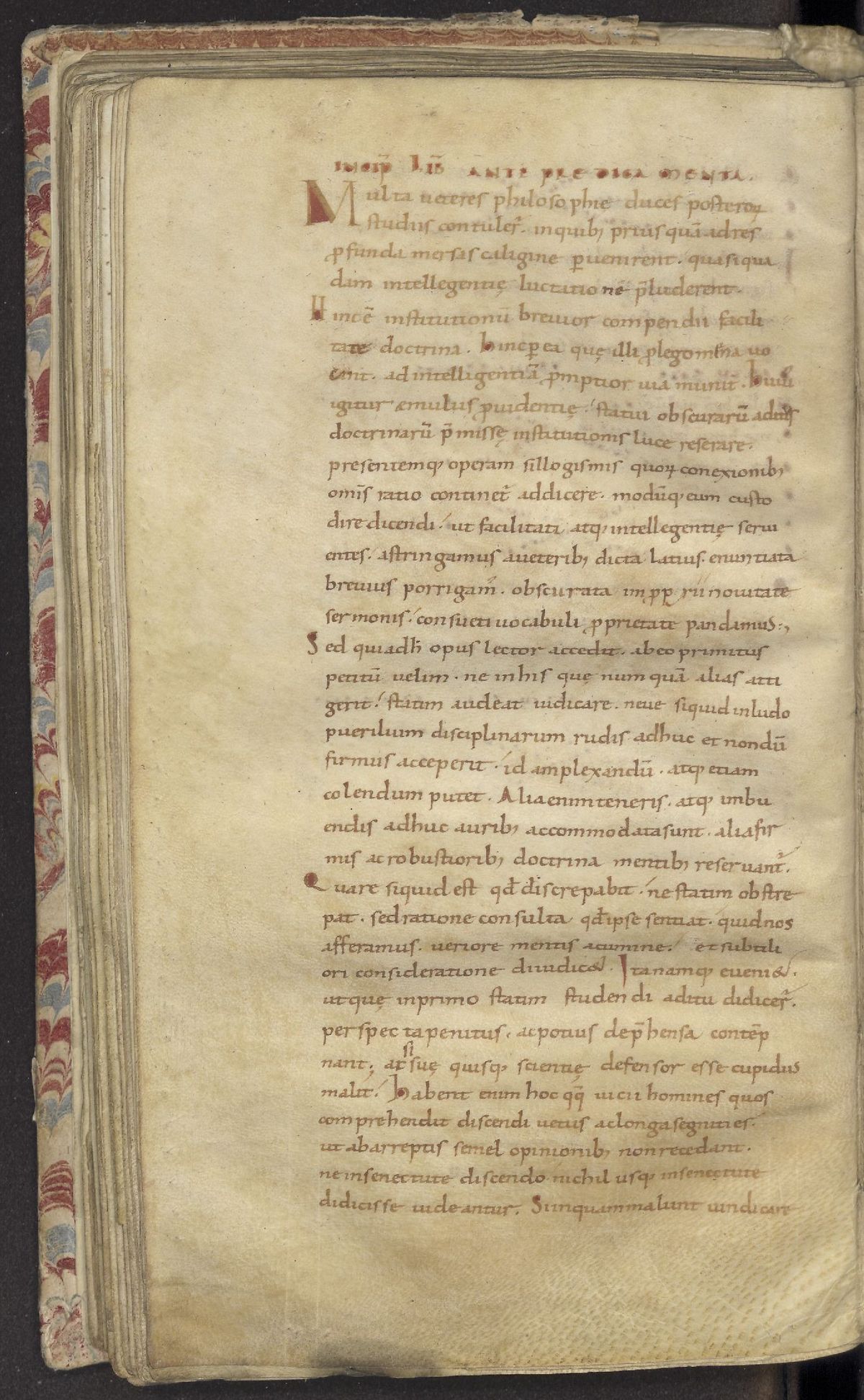

Correction
Fol. 58 is an inserted leaf, of smaller dimensions than the others in the manuscript. Here the scribe has added a portion of text which he missed while copying. The scribe indicates to the reader where the missing passage belongs, writing in the margin of f. 57v, “hic dimitte”, “leave off here”, and above the supplied extract on f. 58r, “hic incipe”, “begin here”.


http://hdl.handle.net/1887.1/item:2348775
Guiding the reader through the text
BPL 84 contains a number of features which helped the reader find their way around the manuscript. On f. 44v, two sets of rubrics (written in red) indicate that one text has ended and that another will begin on the next page. On f. 8r a decorated initial is used for the first word of a new text.


http://hdl.handle.net/1887.1/item:2348775
Initials
As well as helping to break up a text visually, initials could also entertain the reader. These examples, sometimes even salacious, must have spiced up the study of logic!
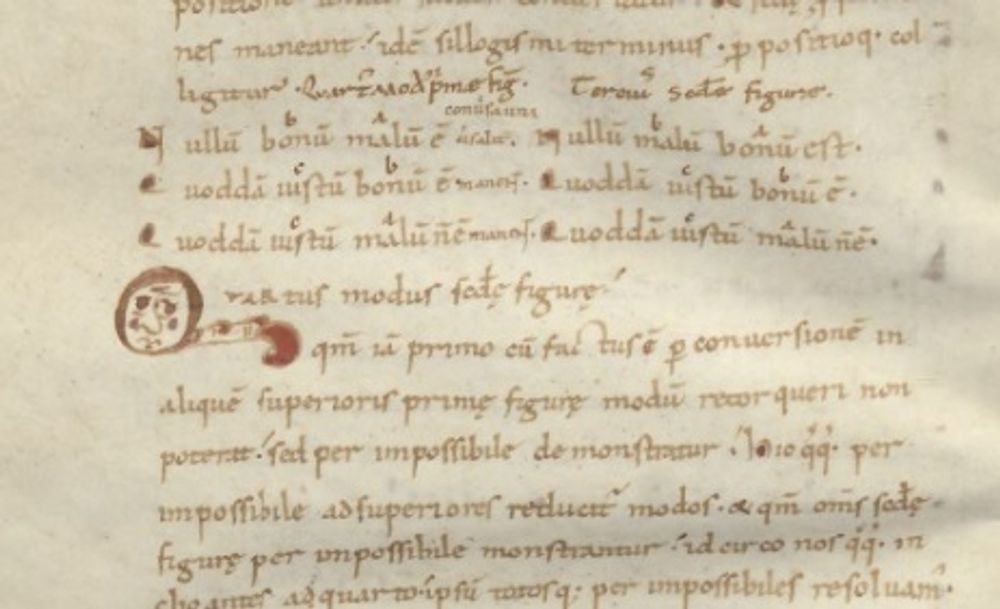

http://hdl.handle.net/1887.1/item:2348775
Diagrams as a means of explaining the text
Boethius’s De divisione was an important guide to differentiation by genus and species, and processes of definition of nouns. An elaborate scheme snakes along the outer margin of f. 5v paralleling the division of ‘vox’, spoken sound, given in the text.
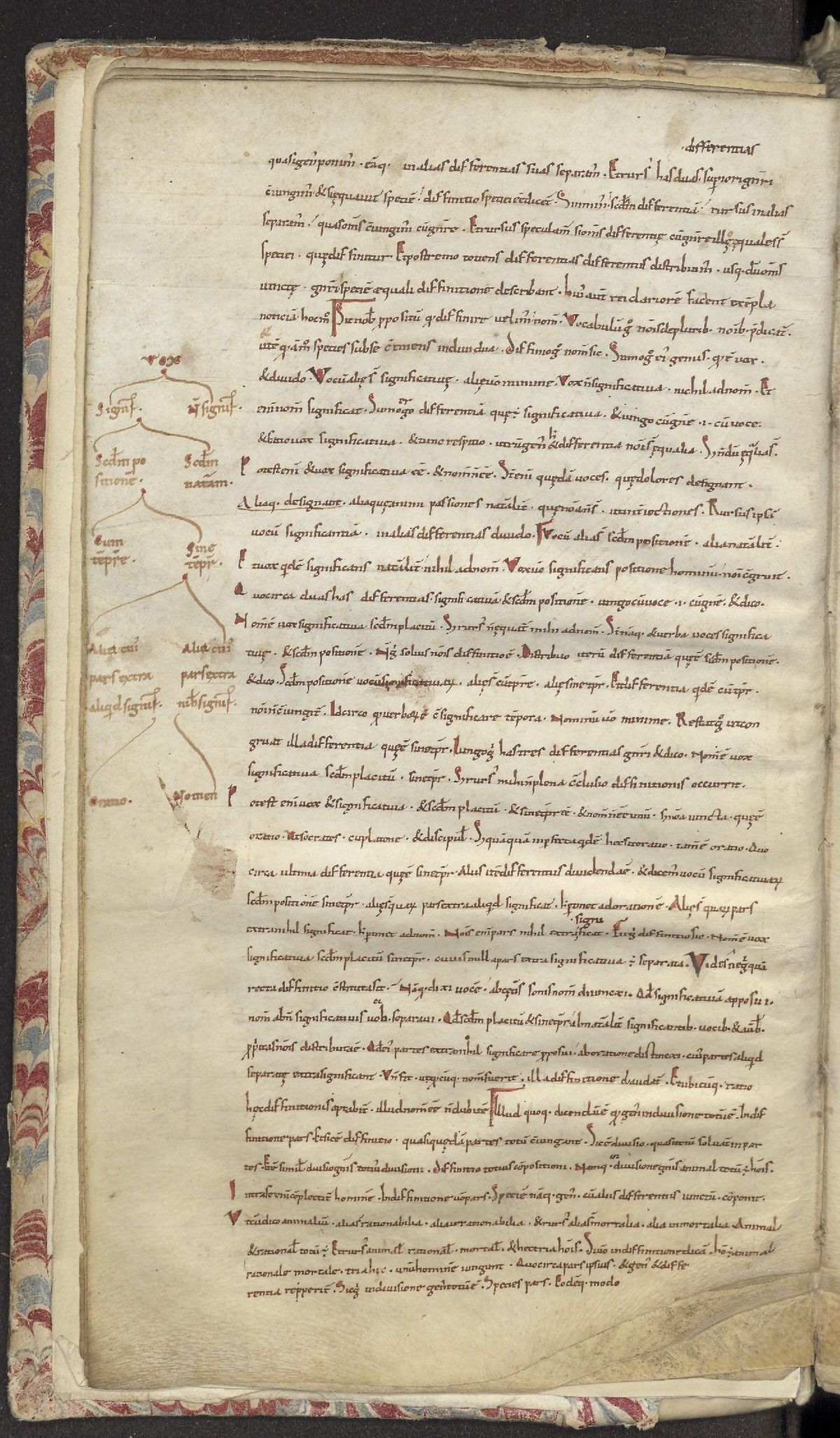

Here on f. 7v, two different hands have added diagrams in the margin, again visually paraphrasing the text. The one at the top of the margin, which deals with the significations of equivocal expressions was added by a later reader; the second scheme, stroked with red, which itemises forms of ambiguous expressions, was probably added by the scribe, perhaps even copied from the exemplar.
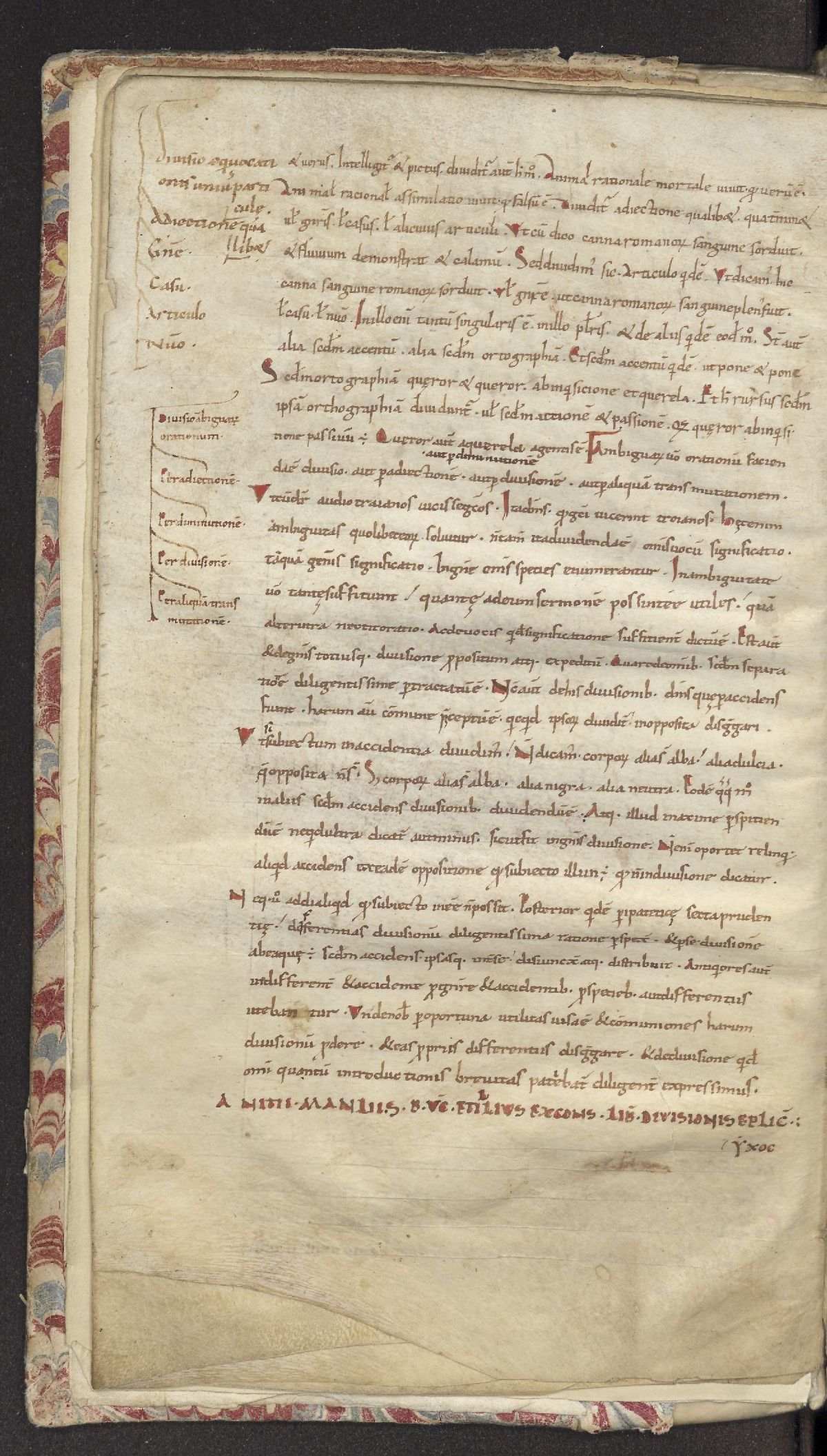

Like many copies of Boethius’s De syllogismo categorico, this manuscript contains a ‘square of opposition’ (f. 48r). This allows the reader to visualise the forms of affirmation and negation inherent in dialectic reasoning. For example, if the statement ‘every man is just’ is true, then the claim that ‘some man is unjust’ must necessarily be untrue. The scheme was first sketched and labelled by the scribe; its red detailing was added later, over the sketched lines.


While the square of opposition on f. 48r was placed within the text block, illustrating that it was intrinsic to the text, these schemes accompanying the Introductio ad syllogismos categoricos were added in the margin alongside the text. The first, on f. 74r, clarifies the set of syllogistic propositions found within the text and places them in visual relation within a square of opposition. In the second example, on f. 74v, the propositions are tabulated, and divided into universal and particular affirmatives, and universal and particular negatives. To find out more about these terms for propositions see Squares and Trees.


Here a detailed and original scheme has been added at the conclusion of the Introductio ad syllogismos categoricos by the scribe. This scheme, discussed here, utilises blank space at the end of the text to sketch out Boethius’s ideas, and serves as a summary of part of the text.


Sources used for this contribution:
- Gumbert, J. P., Illustrated Inventory of Medieval Manuscripts in Latin Script in the Netherlands, vol. 2: Leiden, Universiteitsbibliotheek BPL (Hilversum, Verloren, 2009)
- Magee, J., Boethii, De divisione liber: Critical edition, translation, prolegomena and commentary (Leiden, Brill, 1998)
- Marenbon, J., Boethius (Oxford, Oxford University Press, 2003)
- Migne, J.-P. (ed.), Patrologia Latina, vol. 64
Contribution by Irene O’Daly.
Cite as, Irene O’Daly, “Leiden, UB, BPL 84”, The art of reasoning in medieval manuscripts (Dec 2020), https://art-of-reasoning.huygens.knaw.nl/bpl84. ↑


